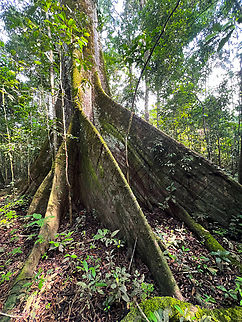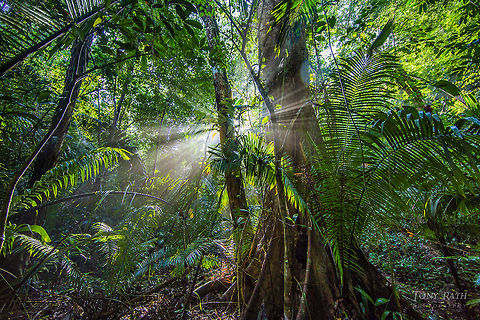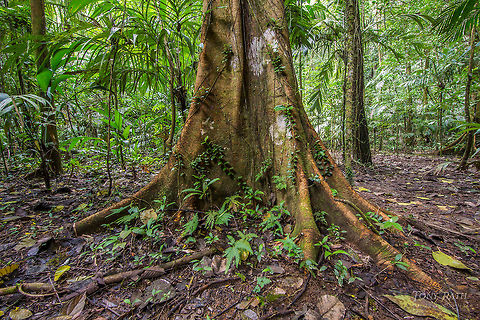
Appearance
The tree grows to 60–70 m tall and has a very substantial trunk up to 3 m in diameter with buttresses. The trunk and many of the larger branches are often crowded with very large, robust simple thorns. The leaves are compound of 5 to 9 leaflets, each up to 20 cm and palm like. Adult trees produce several hundred 15 cm seed pods. The pods contain seeds surrounded by a fluffy, yellowish fibre that is a mix of lignin and cellulose.
Uses
The fibre is light, very buoyant, resilient, resistant to water and flammable. The process of harvesting and separating the fibre is labour-intensive and manual. It is difficult to spin but is used as an alternative to down as filling in mattresses, pillows, upholstery, zafus, and stuffed toys such as teddy bears, and for insulation. It was previously much used in life jackets and similar devices until synthetic materials largely replaced the fibre. The seeds produce an oil used locally in soap and that can be used as fertilizer.Native tribes along the Amazon River harvest the kapok fibre to wrap around their blowgun darts. The fibres create a seal that allows the pressure to force the dart through the tube.
The commercial tree is most heavily cultivated in the rainforests of Asia, notably in Java, Philippines, Malaysia, Hainan Island in China as well as in South America. The flowers are an important source of nectar and pollen for honeybees."Ceiba pentandra" bark decoction has been used as a diuretic, aphrodisiac, and to treat headache, as well as type II diabetes. It is used as an additive to some versions of the hallucinogenic drink Ayahuasca.

Cultural
The kapok is a sacred symbol in Maya mythology.According to the folklore of Trinidad and Tobago, the Castle of the Devil is a huge kapok growing deep in the forest in which Bazil the demon of death was imprisoned by a carpenter. The carpenter tricked the devil into entering the tree in which he carved seven rooms, one above the other, into the trunk. Folklore claims that Bazil still resides in that tree.
References:
Some text fragments are auto parsed from Wikipedia.